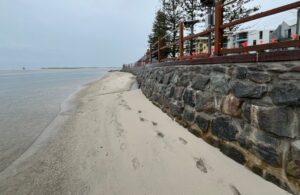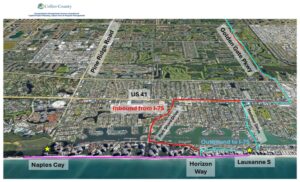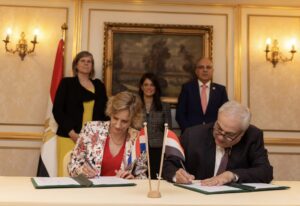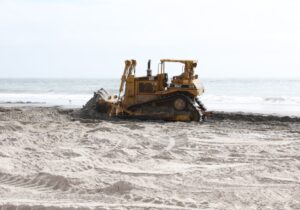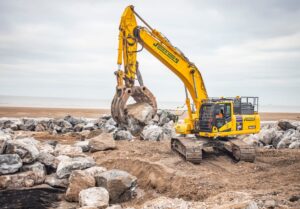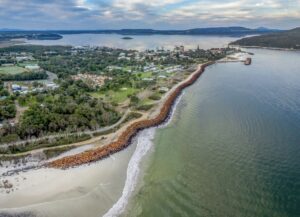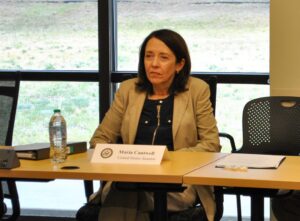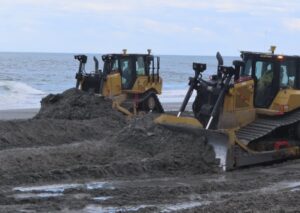USA: Computer Model to Help Managers with Renourishment Decisions
A computer model developed, in part, by University of Florida researchers can help coastal managers better understand the long-term effects of major storms, sea-level rise and beach restoration activities and possibly save millions of dollars.
Researchers used erosion data following tropical storms and hurricanes that hit Santa Rosa Island, off Florida’s Panhandle, and sea-level rise projections to predict beach habitat changes over the next 90 years. But they say their model can be used to inform nourishment decisions at any beach.
Since the first project of its kind in the U.S. at Coney Island, N.Y., in 1922, coastal managers have used beach nourishment – essentially importing sand to replace sediment lost through storms or erosion – to restore damaged beaches, but it is laborious and expensive. Adding to coastal managers’ headaches, the offshore sand used for such ventures is running short.
Florida has allotted $37 million in state money for beach nourishment projects this fiscal year, which ends June 30, and has appropriated almost $105 million over the past five years, according to the state Department of Environmental Protection.
“Moving large amounts of sand onto the beach is costly,” said Rafael Muñoz-Carpena, a UF professor of agricultural and biological engineering and study co-author. “Certainly preserving the beach has important benefits for humans and ecology, but as with any management decision, benefits need to be balanced by cost, especially when sooner or later the beach might be lost to sea-level rise or a major storm. How much is it worth for society to keep the beach longer in a given spot?”
Decision-makers must answer those questions, and the answers won’t be cheap, Muñoz-Carpena said.
UF researchers used their model to find out how long a beach would last under varying conditions, said Greg Kiker, an associate professor in agricultural and biological engineering and a study co-author.
“Everyone knows that when you nourish a beach, it doesn’t last forever. It gets washed away,” Kiker said. With mean sea level rising, a storm that may not have done as much damage 20 to 40 years ago can do more damage today, he said. “As engineers, we said, ‘OK, what can we do about it?’”
Using the model, coastal managers can assess tradeoffs ─ spending vs. benefits ─ of beach nourishment that will provide the most benefit for vulnerable species, adjacent residential areas and military installations, Muñoz-Carpena said.
The study by members of UF’s Institute of Food and Agricultural Sciences came after the U.S. Department of Defense asked for research to assess the future vulnerability of endangered and protected shorebirds on Panhandle military installations to rising sea levels and major storm surges.
UF researchers used erosion data and post-storm nourishment strategies after hurricanes Ivan and Dennis and Tropical Storm Katrina struck the island, which is part of Eglin Air Force Base in Fort Walton Beach. The beach suffered severe erosion after each storm.
They also used National Oceanic and Atmospheric Administration data from 69 major storms over the past 154 years, within about 65 miles of Santa Rosa Island, to construct storm-striking scenarios.
Computer simulations of 4,000 storms suggested that without nourishment, a tropical storm or hurricane and sea level rise would reduce Santa Rosa Island’s beach by 97 percent to 100 percent by the year 2100. But that loss can be cut to 60 percent with a 3-foot beach and to 34 percent with 5 feet in sand nourishment, the study said.
Muñoz-Carpena and his colleagues said they’re not urging coastal managers to pump sand, which generally comes from offshore, onto beaches at any particular frequency. He cautions that the data may be limited by the uncertainty of future tropical storms and sea level projections.
Muñoz-Carpena and Kiker wrote the paper with Maria Chu, a former UF postdoctoral research associate in agricultural and biological engineering and now a postdoctoral fellow at St. Louis University; Jorge Guzman, a research associate with the U.S. Department of Agriculture in El Reno, Okla. and Igor Linkov, a research scientist with the U.S. Army Engineer Research and Development Center in Concord, Mass.
[mappress]
Press Release, February 27, 2014


